Spring Waking
A light exists in Spring
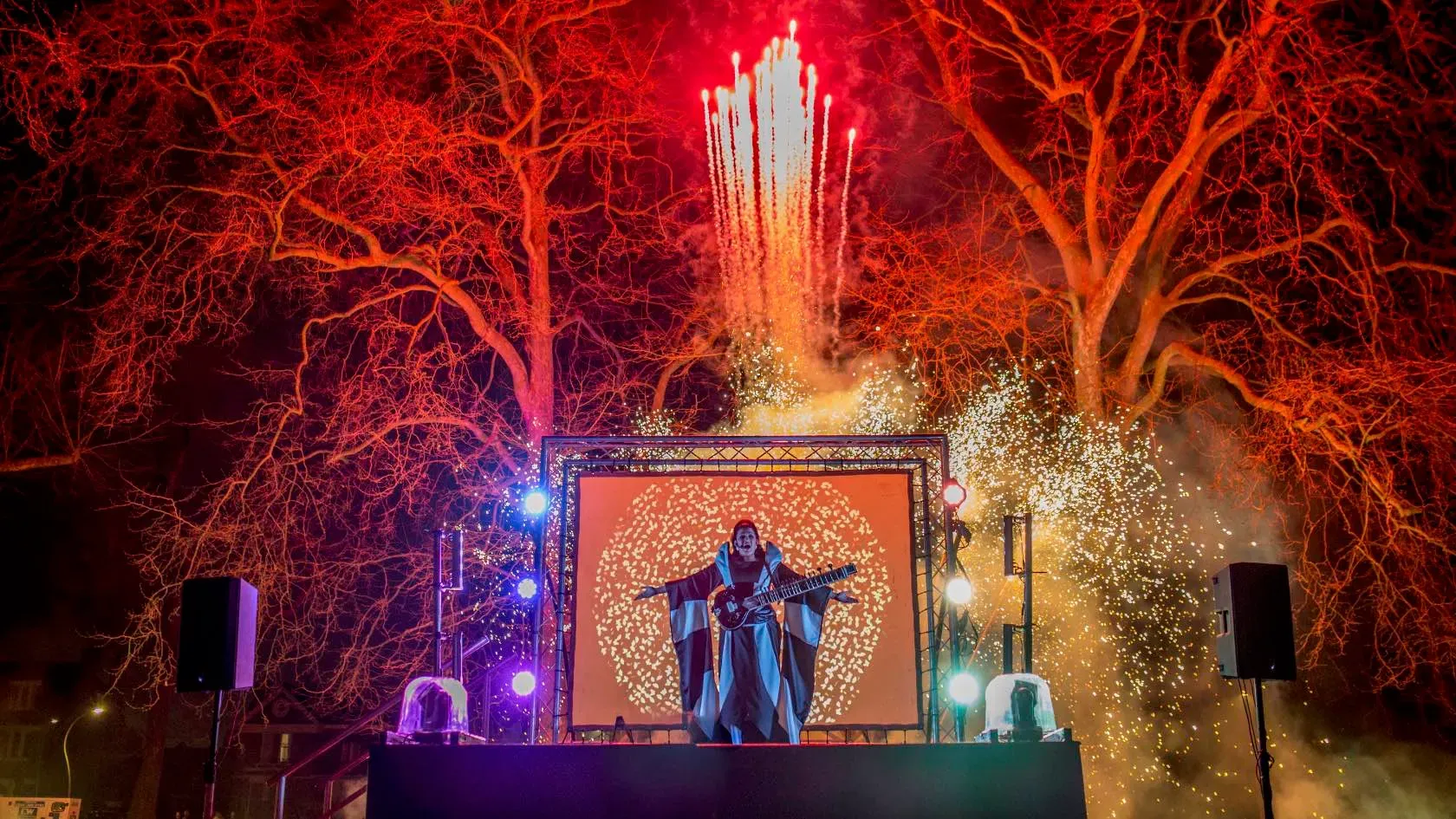
A light exists in spring
Not present on the year
At any other period
When March is scarcely here
– Emily Dickinson
Spring Waking is Output Arts’ first outdoor arts co-production — working together with Emergency Exit Arts, we created an event in East Dulwich for Southwark Presents featuring an illuminated community carnival parade and a musical performance with projected visuals, lighting and pyrotechnic effects. This was supported by a programme of carnival making, drumming and dancing workshops in local schools and the broader community.
The whole project was characterised by firsts for us: as well as our first co-production, it was our first piece formed around a narrative concept; our first go at commissioning other artists; our first time designing and developing digital visuals for a performance; and Output Arts’ first grant from Arts Council England!
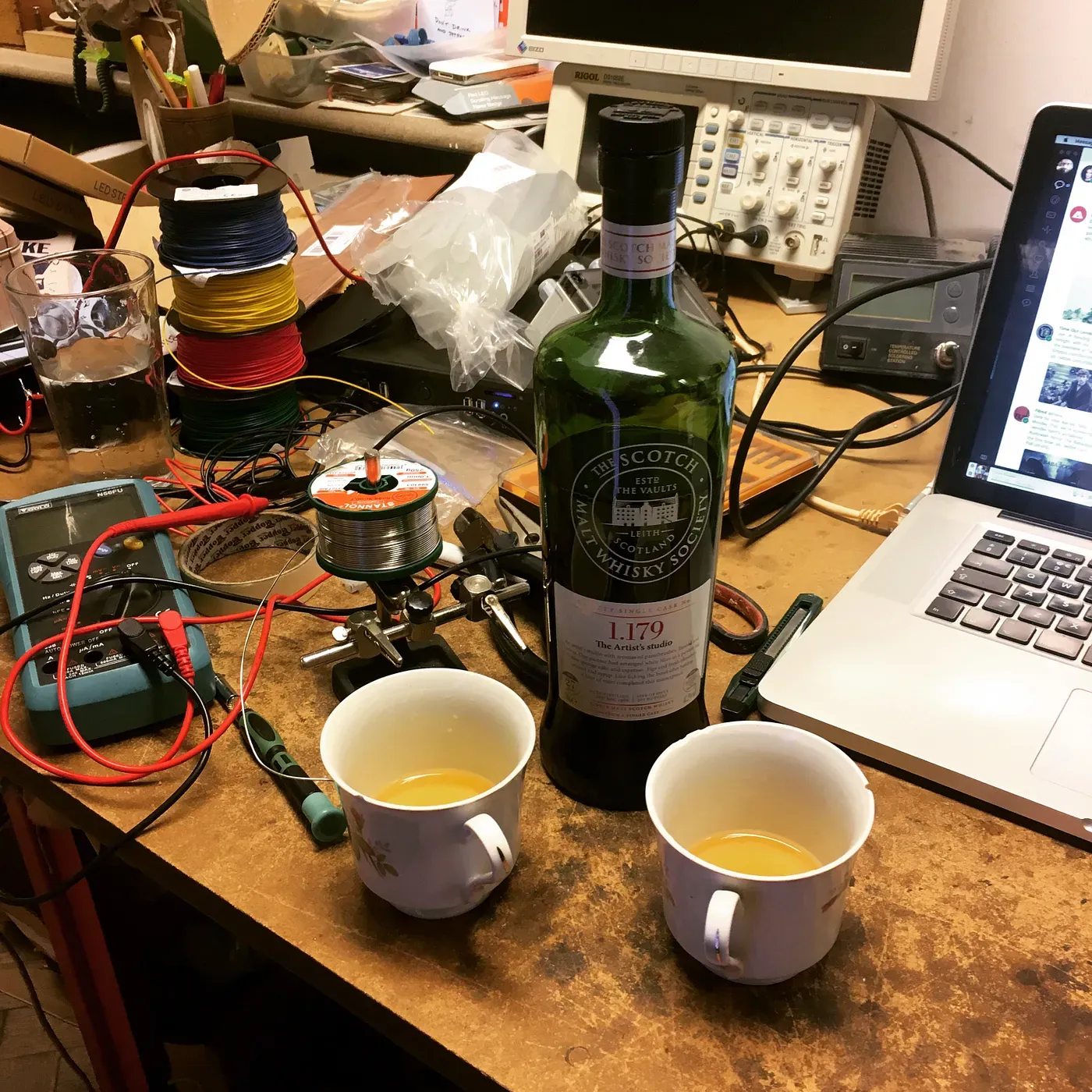
The idea for the event came out of the timing: we thought it would be great to do a public art event coming out of Winter, when the excitement of Bonfire Night, Diwali and Christmas has been forgotten and the cold and dreary weather is beginning to give way. The Spring Equinox in 2017 provided us with the perfect opportunity — with an almost exactly 12 hour day passing into night at around 6pm on a Saturday, we could celebrate this solar tipping point at a family friendly time. The equinox also provides an opportunity to consider a larger theme of transition, moments of balance between the before and the after, the enormity of the motion of the solar system contrasted against the changes in our personal lives.
We wanted to combine a parade with a performance: carnival is a fantastic way to get people engaged and participating together, but having something to process towards is even better – a kind of reward for taking part. We decided to base the event around a narrative: a story of a sleeping Spring goddess who has to be woken to sing in the new season. Keeping with the theme of balance between night and day, we hit upon the idea of a parade of moths and butterflies searching for the Spring goddess to wake her up — this gave us an instantly recognisable visual motif and would fit well with the loud drums of the parade.
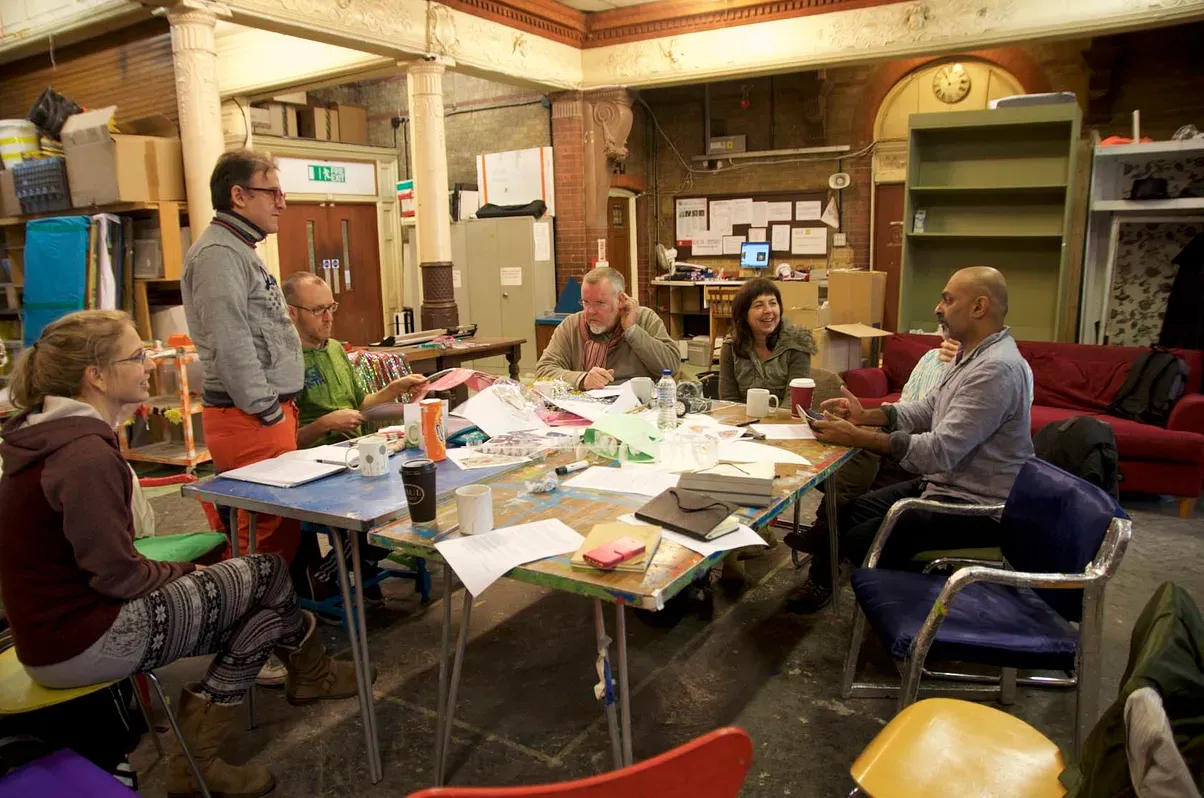
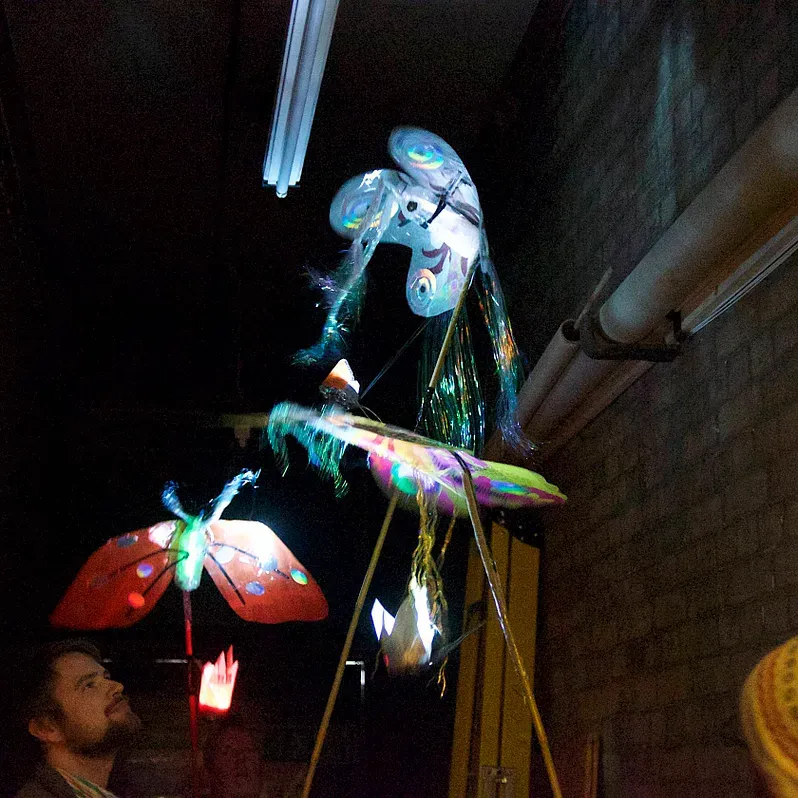
Parade prototyping session at Emergency Exit Arts
Our plan was to work with primary school children from the schools around the area to make illuminated moths and butterflies, a somewhat daunting task when we considered the scale of the parade and the complexities of manufacturing weatherproof lanterns. However, working with our parade lead artist Cris Ottonello (who we had the pleasure of first meeting when we did Storm at Enchanted Parks in 2016), we managed to come up with a simple repeatable process involving laminating cut-up bits of tissue paper and card, and designed a mechanism for up-lighting these with cheap battery-powered LED lamps.
To increase the presence and excitement of the parade, we wanted to have a giant animated ‘lead’ moth and butterfly. Emergency Exit Arts (EEA) have lots of experience making large parade costumes, but less experience working with digital technolgy. So as part of our skill-sharing plan, I ran an LED programming workshop for EEA artists where everyone had a chance to do a bit of coding and experiment with making digital LED strips light up in different colours and patterns. This is the same technology that we then fitted into the articulated wings of our giant lepidopterae – designed and constructed by EEA artist Tony Mason, who we got to learn from in turn, during a day spent bending and riveting aluminium.
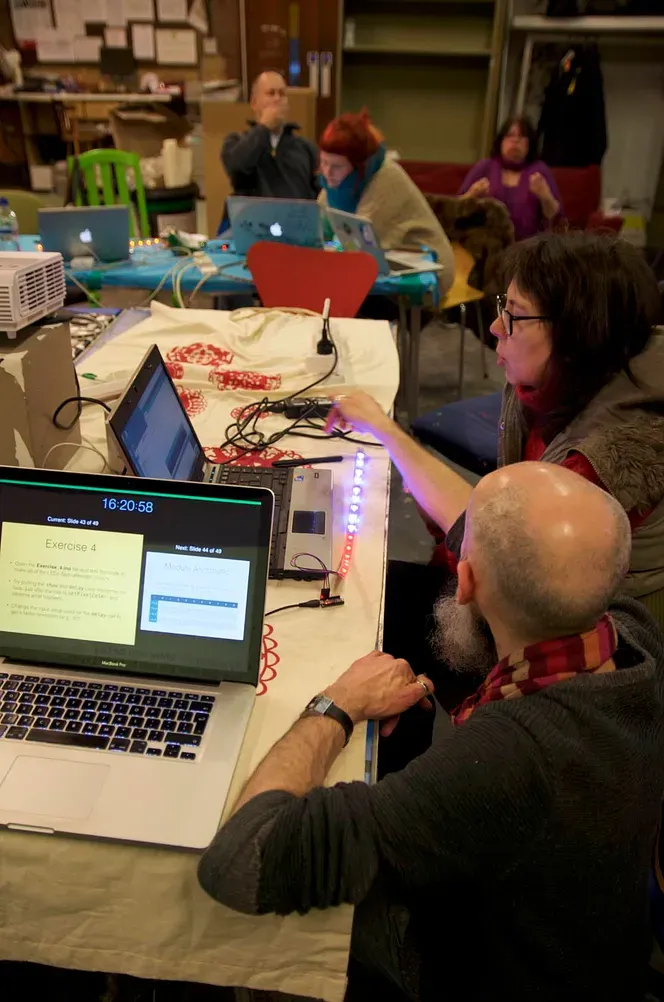

Artist skill-sharing in action
The parade would work its way through the streets of East Dulwich to Goose Green, where we planned to have a musical performance that would represent the Spring goddess singing in the Spring. Having had the pleasure of working with her when we did VOX last year, we knew there was only one person to be our goddess: Bishi. So in our first piece of commissioning, we asked Bishi to write and perform us a new piece for Spring Waking, with Neil Kaczor composing the music.
We had some clear ideas about the visual look we wanted the whole event to have, working with story and the butterfly/moth motif, so we decided to have a go at designing and developing the visuals to accompany the performance. This is somewhat new to us, while we’ve obviously done computer-controlled visual pieces before, we’d not attempted anything so scripted. The plan for the transition from parade into performance was that the butterfly and moth lanterns would all be turned off after arriving at Goose Green. We imagined a cacophony of drumming and movement dropping suddenly into darkness and then the soft opening of the goddess’ song, as if she was waking drowsily from her Winter slumber. We envisaged all of the butterflies and moths that the children had made becoming the visuals and clustering around the goddess. These butterflies and moths would then tell the story of the equinox to the goddess.
While there are plenty of tools out there for creating digital graphics, we don’t have experience with any of them. I’m a computer programmer by trade, so I attacked the problem of creating the visuals as I would other such problems: by writing a computer program. In this case, I wanted to try using web technologies to develop the visuals. This was an opportunity to see what can be done with the 3D graphics capabilities of modern browsers and would provide us with the ability to have the work-in-progress visuals always available online for Bishi and the rest of the team to work with. The principle of the piece was for hundreds of individual butterflies and moths to form the ‘pixels’ in a screen, with the images created as they flapped their wings — in this case, magical wings that would change colour each time they flapped.
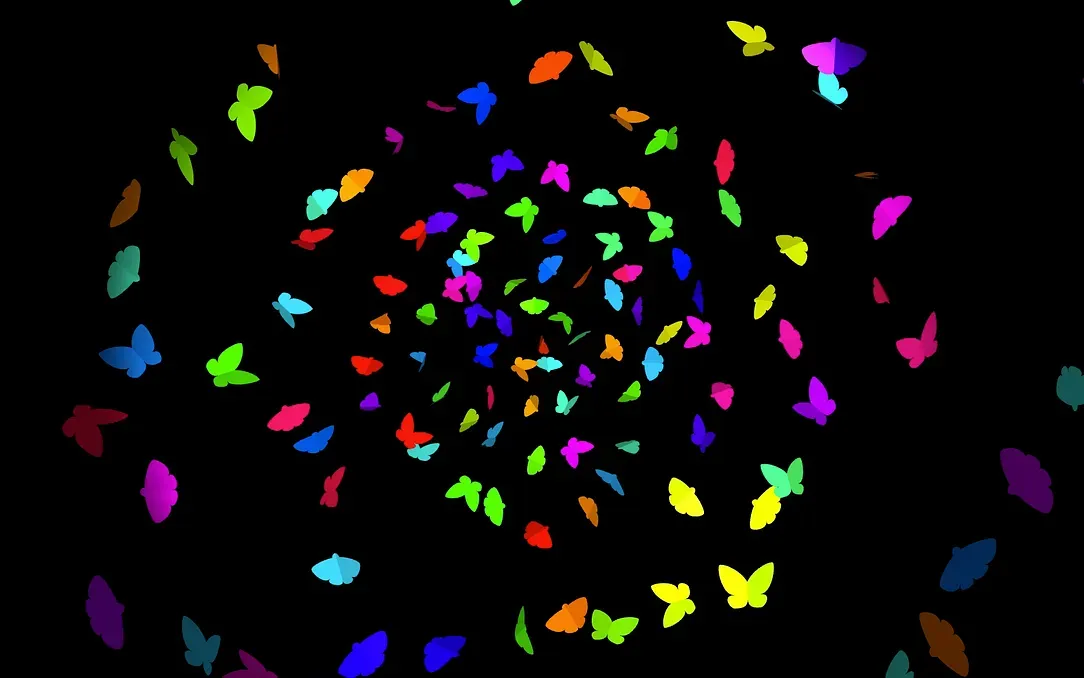
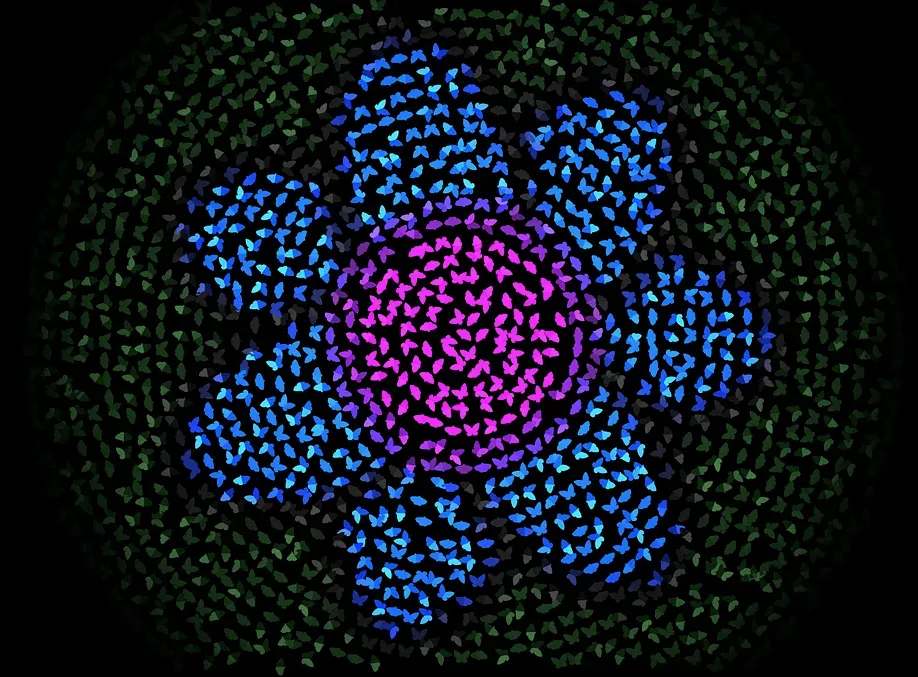
Butterflies and moths in the Spring Waking visuals
The final visuals involved animating about 1500 individual 3D butterflies and moths, each separately simulated such that they would appear to act with their own agency. Each would fidget: wandering away from their assigned position and flapping their wings at the wrong moment, occasionally to the wrong colour; the intent was to give the visuals an organic, natural feel. However, by working together, the butterflies and moths would visually animate the story of Winter giving way to Spring, the cycle of the passing days and seasons, images of snow, new growth, flowers and sunshine.
While I worked away on the visuals, Andy and a team of EEA artists delivered the workshops in and around East Dulwich. A key part of our original concept for the whole event was to use it to consider the idea of transition and change. The workshops provided an opportunity to talk with the young people about moments of change, both the obvious seasonal changes and more personal life changes: changing school, moving house, a new sibling being born. Each of the children partly decorated their own butterfly or moth with words picked out from these discussions. We had great support from the schools and teachers in this endeavour and some of the words that the children picked out were also projected onto the screen before the performance began, causing perhaps some slight confusion for the uninitiated audience, but a point of recognition for the participants.

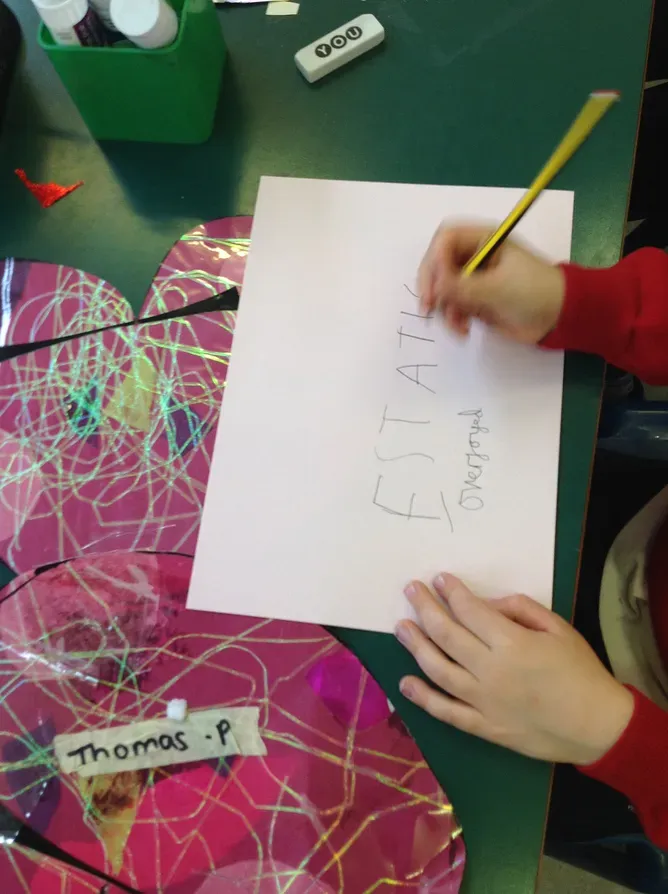
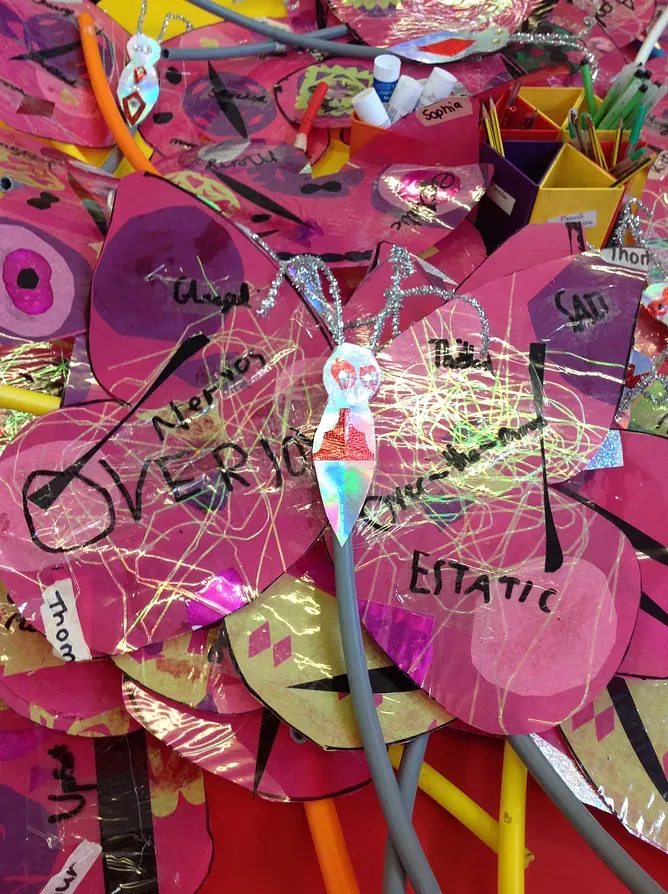
Workshop at Bessemer Grange School
The making workshops in schools were extended with 3 open community workshops, giving the broader public an opportunity to make a butterfly or a moth to bring to the parade. In addition to these making workshops, we also ran drumming workshops with our parade band South London Samba and movement workshops with our parade choreographer Carlos Cortes. For the final parade the band was accompanied by about 60 children beating bucket drums and three dancers in LED costumes helped shepherd the audience along the route and into the right place – bringing some colour and movement to the team of parade stewards.
Working with EEA also allowed us to use one of their particular areas of expertise: pyrotechnics! Their pyro designer and technician, Frank Earle-Whiffen, put together a short low-level display that added drama and excitement to the final part of the performance, choreographed to the music. We also created a backdrop to the stage by lighting the trees behind as part of the stage lighting design by Ben Moon (see the picture at the top of this article).
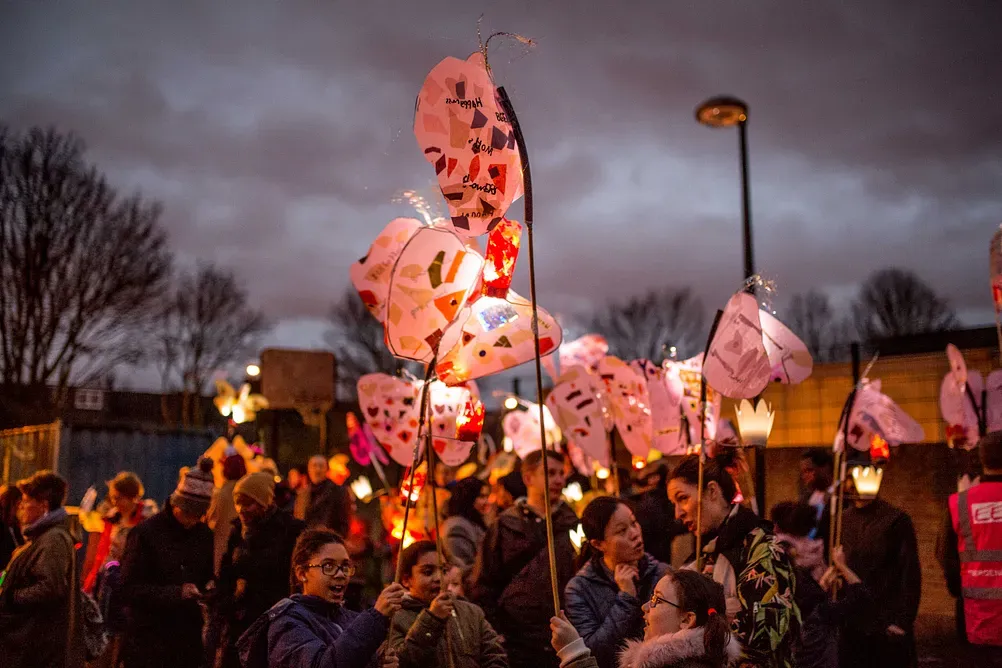
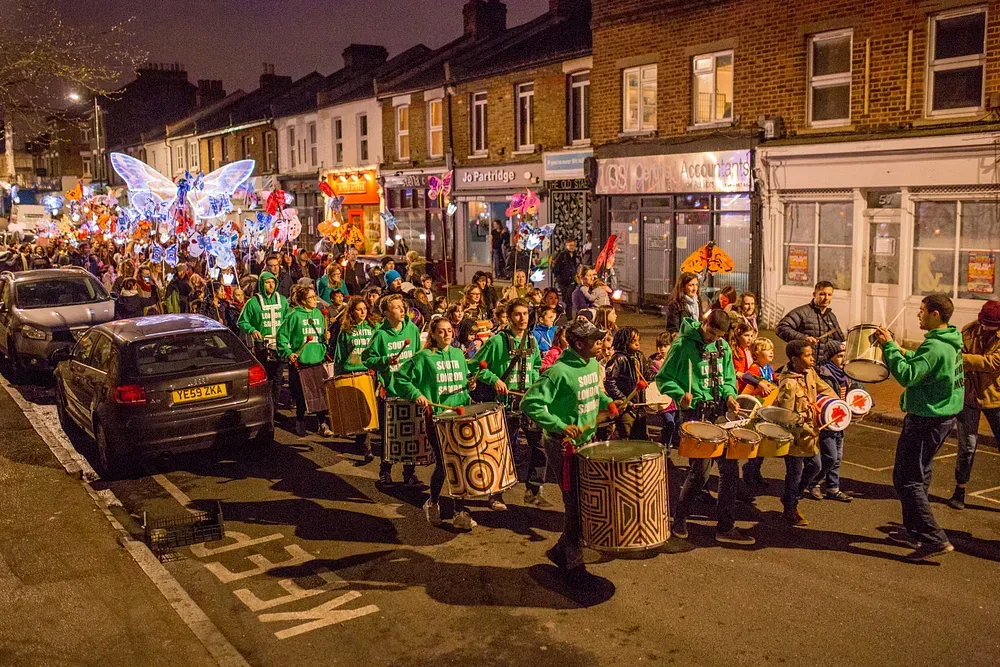
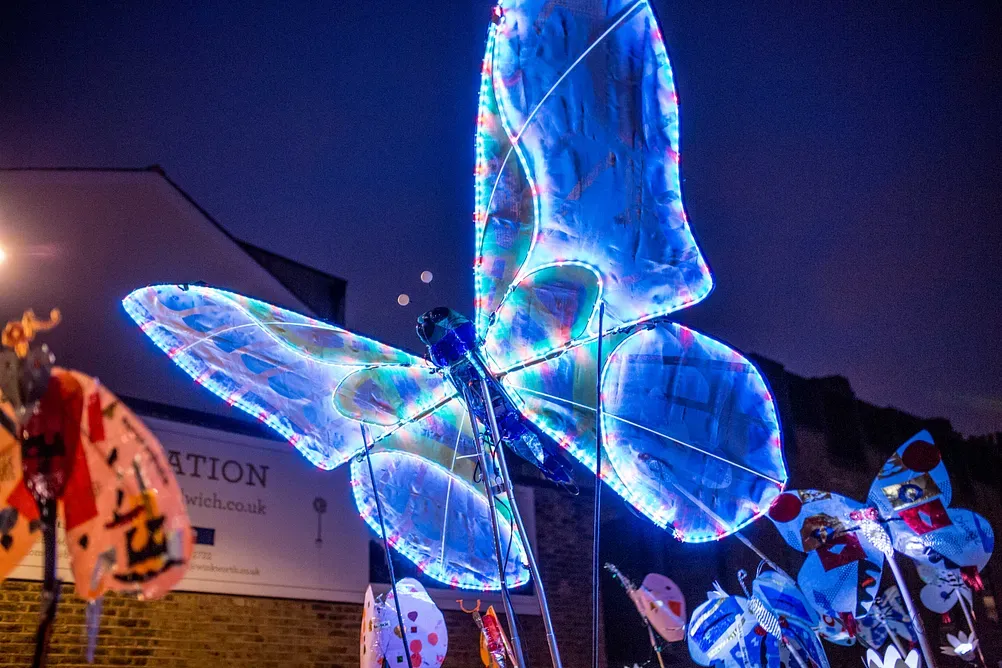
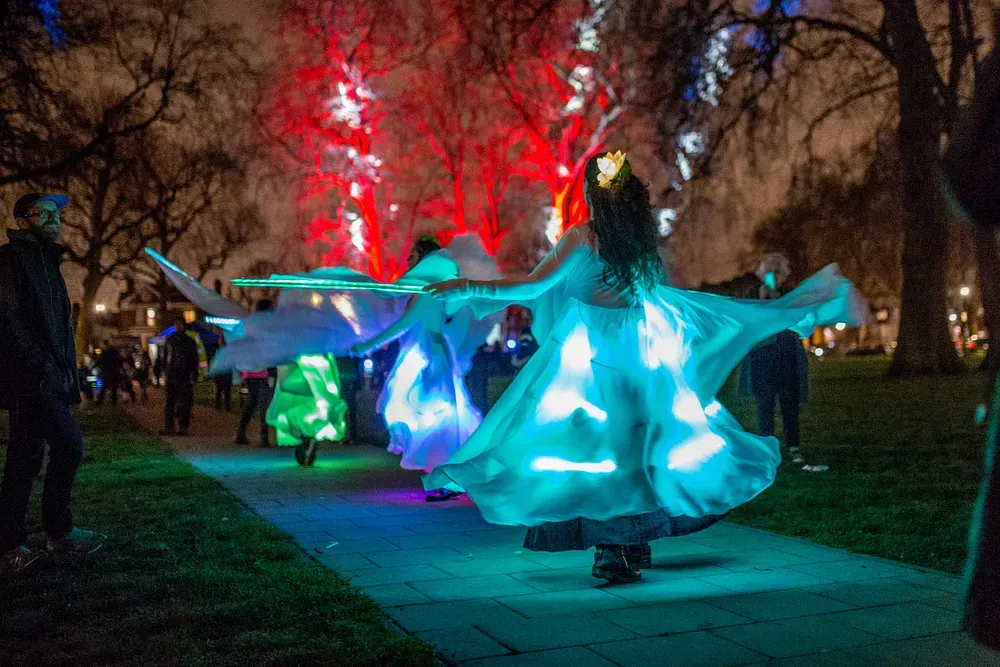
Spring Waking parade (pictures by Jack Pasco)
We think the whole event was a huge success and we received a lot of great positive feedback afterwards from the audience, participants, schools and funders. We learned a lot working with Emergency Exit Arts and owe them a huge debt of thanks for taking a chance on working with us.
There are almost too many people to thank (my notes say that 47 different artists were involved), however we should try. As well as the people called out individually above, we need to thank: the rest of the workshop team, Anna, Camile, Di, Jamshid, Jonny, Robin, Stephen and Tash; our dancers, Jesal, Marcina and Maria; puppeteers Chloe and Jack, who managed to make the heavy butterfly and moth float above the crowd weightlessly; Adam from South London Samba. Particular thanks are due to Ben Raine for event managing the performance and Elene Grice for parade event management and tireless project management throughout. Finally, to our partner-in-crime at Emergency Exit Arts, Deb Mullins for going on this journey with us and championing us always.
Being a project about transition, Spring Waking has struck a chord with us. This last year has been one of major changes for Output Arts, both in the scale of the work we’ve been able to do and the level of attention we’ve been able to bring to it. These are difficult times to make a living as an artist and all one ever wants to be able to do is make work that has some meaning and impact; we’ve made some work this last year that we are proud of and Spring Waking feels like a particular achievement.
And finally, here’s a video of Spring Waking for you to enjoy, edited by the ever-excellent Emily of brothersister.
